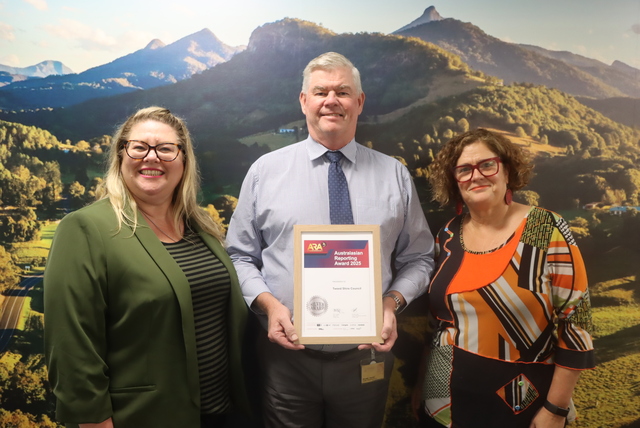The Good Oil by Rod Brown *
Innovation policy will underpin the Federal Government’s efforts to position Australian industry over the next three to five years. One of the biggest plays is the commitment to the Cooperative Research Centres Program (CRC), which was announced before the last election by the then Industry Minister, Senator Nick Minchin.
Few people realise that CRC funding will increase from $143 million to $198 million a year by 2003, and then to $256 million by 2005. The next selection round closes in May – and will entail more dollars for some existing CRCs and new CRCs. A key message is that ‘applicants are being encouraged to think innovatively about how they can better involve the many small and medium enterprises that make up an important part of Australia’s industrial structure’ and to ‘think strategically about international links and collaborative arrangements’.
The revamp of the CRC Program is part of Canberra’s interest in regional innovation systems, and aligns with policy thinking overseas. For example, the European Union is providing 400 million euros to assist the less favoured regions to cope with globalisation of the economy, while promoting economic and social cohesion in the European Union. Their thinking is to develop competitive assets based on innovation, rather than leaving regions to compete on costs, particularly wage costs, since such an advantage can be swiftly eliminated in an increasingly globalised economy.
The EC is, of course, quite up front in addressing inequalities in physical infrastructure, such as transport and communications, energy, environment, and business activity between regions. Now they are addressing inequalities that can arise due to the impact of the knowledge based economy, for example the ‘digital divide’, and more intangible competitive factors such as regional innovation capacity.
The rationale is that the links in innovation systems are weaker, more fragmented or simply nonexistent in certain EC regions and industries. Firms are smaller, less innovative and tend to see other local firms in the same sector as direct competitors; there is little tradition and business culture related to business networking; branch plants may be simply exploiting regional cost advantages; public agencies are not facilitating value chain networking through local subcontracting; SMEs are finding it difficult to access public funds for innovation and networking; government programs have long lead times for payment and implementation; universities in less favoured regions tend to be relatively young, and have weak relationships with the private sector.
Sound familiar? Wouldn’t you swear they were talking about Australia? The EC program actually nominates what activities might be funded, and it provides ideas and encouragement for those contemplating bidding for CRC funding – and this shouldn’t be left to the research boffins. It may mean you!
Some of the EC activities eligible for funding include the following.
- Staff exchanges between research centres, universities and firms, particularly SMEs
- Dissemination of research results and technological adaptation within SMEs
- Establishment of technological strategies for the regions, including pilot projects
- Support for incubators for new enterprises which have links with universities and research centres
- Encouragement for spin offs from university centres or large companies oriented towards innovation and technology
- Schemes for assisting science and technology projects carried out jointly by SMEs, universities and research centres
- Contribution to the development of venture capital for business start-ups.
Behind the EC thinking is the burgeoning literature about networks, regional competitiveness and innovation processes.
This has gone on for at least two decades with examples including the following.
- ‘Industrial districts’ from the Italian school
- ‘Innovative milieux’ from the francophone and Spanish school
- ‘Regional innovation systems’ via the Scandinavians
- ‘Learning regions’ via the Americans, and so forth.
The common thread to each of these concepts is that localised networks are critical because they generate intense knowledge exchange – personal contact, economic/technological transactions, worker mobility and so forth, and flexible and multidirectional networking among different agents such as finance, technology centres, universities, firms, public agencies, business consultants and higher education.
These localised networks are embedded in social/institutional infrastructures that foster cooperation, trust and reciprocity, facilitate the flow of strategic information, nurture alliances, and generate external economies.
Now let’s get back to Australia. If the Australian Government is after the same outcomes as the EC, it has two mighty bits of leverage at its disposal – the aforesaid CRCs scattered around the nation, plus the university system which includes the regional universities.
According to a study released by the Australian Government (DETYA) last year, the regional universities are a spotty bunch, being mostly disconnected from the development priorities of their regions.
The researcher, Associate Professor Steve Garlick form Southern Cross University, concluded that of 16 campuses analysed, only Newcastle University achieved a ‘high level of engagement’ – where it connects in a strategic, whole of institution way by providing an on the ground package of leadership, infrastructure, collaboration and multidisciplinary research and teaching.
The largest number of universities fell into the middle level of engagement – Canberra, Ballarat, Sunshine Coast, South Australia (Whyalla), Curtin (Muresk), Southern Queensland (Darling Downs), Monash (Gippsland) and Southern Cross (Northern Rivers), with a few others very poor performers.. The implications of this are clear. The worldwide evidence is that regional innovation systems underpin economic growth.
The Australian Government has the means to do something about it. Australia’s Chief Scientist, Dr Robin Batterham, has been quoted as saying, “I support the ‘Bring Back The Rope Party’ – death to every science dean who graduates a student who cannot read a balance sheet!” In coming months, he might add ‘Death to university and CRC administrators who cannot appreciate regional innovation systems’!
*Rod Brown’s Canberra based consultancy group, Australian Project Developments Pty Ltd, specialises in industry/regional development and government liaison. For further information telephone (02) 6231 7261 or email apd@orac.net.au







